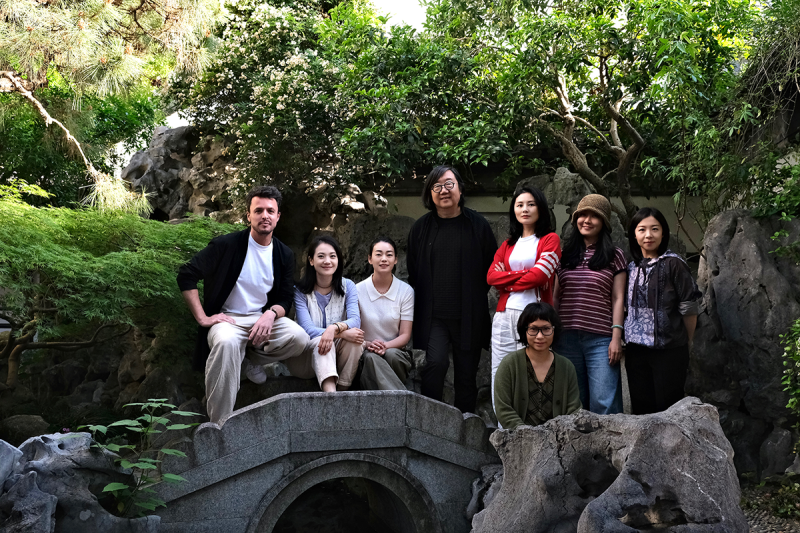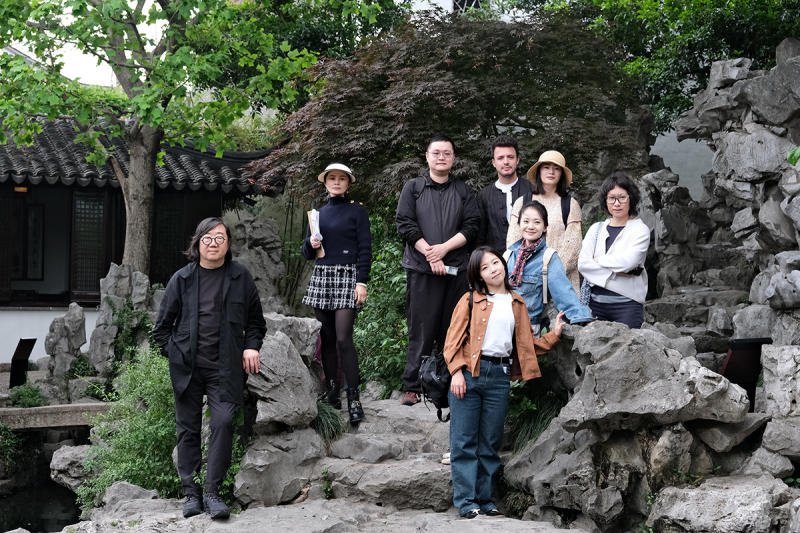2025 Academic Year Short Course Review 「Construction of Paradise:Principles of the Chinese Classical Garden」


A path embraces secluded mountains, unexpectedly nestled within the city.
Amid the gentle blossoming of spring, the course “Construction of Paradise:Principles of the Chinese Classical Garden ”,taught by Master Ye Fang, concluded successfully as part of the 2024-2025 preparatory and advanced studies programmes at the China Center of the King’s Foundation School of Traditional Arts.
This course focused on the principles and methods of execution of Chinese garden design, guiding students into a deeper study and understanding of this traditional art form within a contemporary context.
First week
The first week provided a philosophical overview of Chinese garden design, teaching design principles from the perspective of the historical evolution of ideas and worldview.
Second week
The second week focused on the craft of garden design, including the methodology of garden construction, and gave students the opportunity to engage in hands-on construction of a garden model. Students were thus able to more directly grasp both the artistic principles of the garden and its expressive techniques.
Amidst the clamour of urban life, there is a quiet joy in seeking a hidden retreat—a special sanctuary embracing an ancient and still relevant ideal, where elegant simplicity, the beauty of nature, and a life of reflection quietly endure.
After two weeks of instruction, the dozen students mastered the skill of converting a two-dimensional design plan into a three-dimensional model; that is, the conversion of concept into drawing and again into actual construction on the ground. The practice of Chinese garden art includes the design of waterways, the selection of flowers and plants, the planning and design of pavilions as well as interior design. The students were encouraged to develop their own interpretations of the worldview and methodologies of the traditional Chinese garden.
The connoisseurship of Chinese garden culture develops in the student a deeper understanding of and connection to the aesthetics of the traditional literati scholar, or wenren, which can then be applied to other forms of artistic design.
Hence, Construction of Paradise: Principles of the Chinese Classical Garden discusses both the nature and methodology of garden creation, exploring the inheritance and development of traditional arts in contemporary society. This discussion extends to considering gardens as a lifestyle and attitude. The distinction between “garden art” and “the artistic garden” was also explored: the former addresses the garden as a method of art creation, while the latter considers the garden as a form of artistic expression in itself, embodying both the artistic realization and the artistic ideal of what a garden can be.
The brilliance of the KFSTA courses lies in highlighting the correspondences and integration of principles of traditional Chinese and British arts. From "Courtyard Design in the Islamic Tradition" to“The Constitution of Shanshui Landscape and Geomancy”and the "Construction of Paradise: Principles of the Chinese Classical Garden", these courses initiate a comparative context of intercultural exchange which ultimately seeks to illuminate the correspondences between the natural, scientific and cosmic principles implicit in Western art and those inherent in Chinese artistic traditions, thus bringing greater insights into Chinese aesthetic and cosmic principles.
As an essential part of showcasing teaching outcomes, presentations and models are highly valued by both instructors and students. On the one hand, students express their classroom and garden experiences, thoughts, and understandings through a combination of photography, reports, prints, collages, drawings, and writings, presenting their theoretical insights through visual and textual garden presentations. On the other hand, students demonstrate their learning, inspiration, and creativity by constructing miniature gardens with elements like walls, stones, trees, pavilions, ponds, and installations.
This year’s course brings together a rich tapestry of creative talents—artists, designers, curators of art events, lifestyle aesthetes, and visionary founders of landscape studios. The course unfolded in a vibrant atmosphere of inquiry and exchange, where thoughtful lectures met poetic reflections on gardens, and lively debates blossomed like the subjects they explored. From envisioning the ideal garden to nurturing an inner sanctuary of the soul, every session became a dialogue between art and life, mind and nature. Among the participants were a professor from the School of Architecture at Soochow University, an interior designer from Hunan, a furniture designer from Guangxi, and an incense artisan from Henan—each bringing their unique sensibility to this shared journey of beauty and thought.
Giulio Frigo, an artist from Italy, reserved his place in the course well in advance. He was deeply drawn to the garden context and artistic philosophy articulated by Master Ye Fang. Through this immersive exploration of Chinese garden art, he found a fresh and profound dimension of inspiration for his own creative practice. Several artist participants approached the paper-based and model gardens as forms of installation art. Drawing upon the visual language of the Chinese garden, they integrated it with their own artistic sensibilities to create works that combined text and imagery. Through contemporary materials, they experimented with reinterpreting the interplay of void and solid—so essential to garden aesthetics—infusing their paper and model installations with personal reflections on the philosophical spirit of the classical Chinese garden.
The KFSTA will select outstanding student works to participate in the “Annual Exhibition of Traditional Arts of the East and West” in Suzhou and the “Exhibition of Excellent Student Works” at the KFSTA in London, combining online and offline displays to showcase the brilliance of traditional arts from both cultures.
The garden—our own inner Peach Blossom Spring—remains a sanctuary of the heart. May its vibrant seeds, carried by the eastern breeze of April, journey far and wide.
The gentle breeze and the bright moon are priceless; the nearby waters and distant mountains are full of affection.
